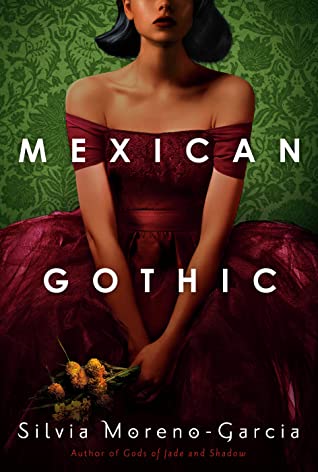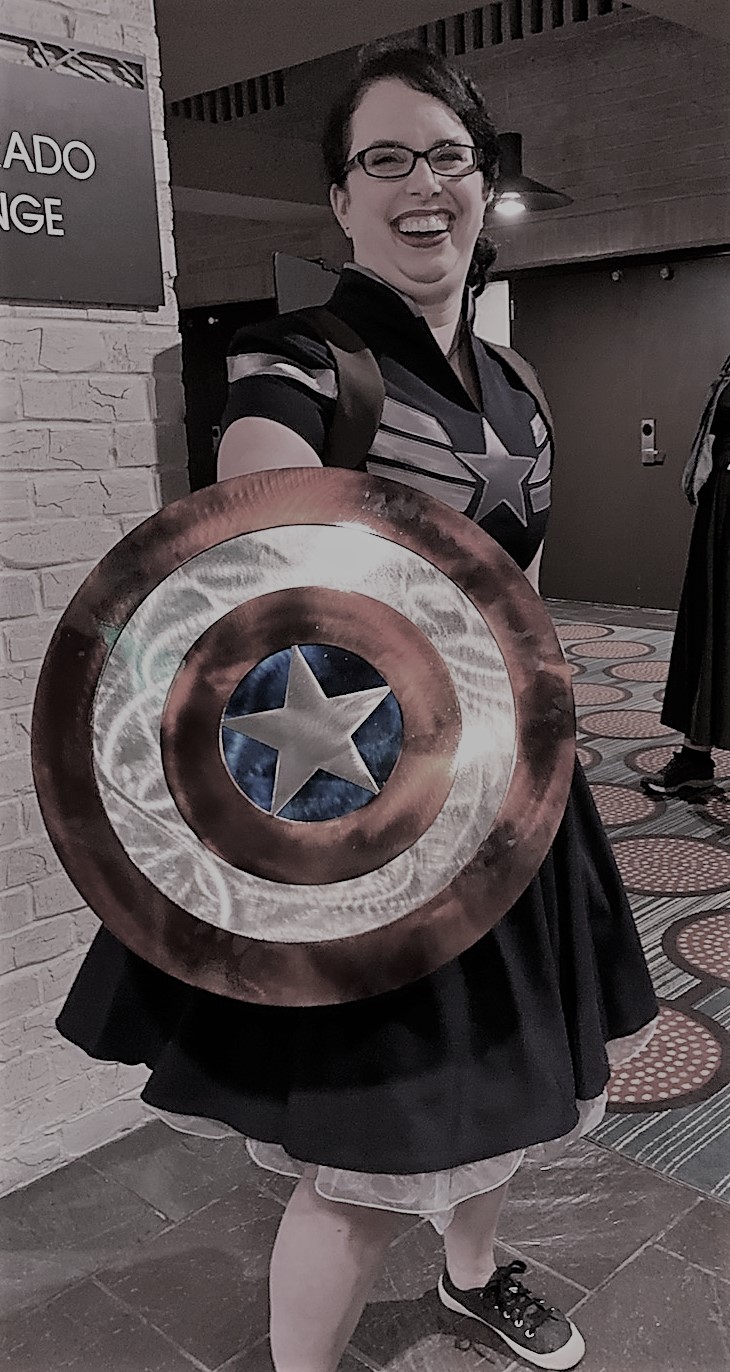Each year, Sirens chair Amy Tenbrink posts monthly reviews of new-to-her fantasy books by women and nonbinary authors. You can find all of her reviews at the Sirens Goodreads Group. We invite you to read along and discuss!

On page 186 of Silvia Moreno-Garcia’s Mexican Gothic, Noemí, our heroine, is mid-conversation with Virgil, the heir apparent of High Place, a crumbling family mansion in rural Mexico. She is in Virgil’s bedroom in the middle of the night, after experiencing a disturbingly vivid sexual dream featuring Virgil and his aggressive masculinity. The first words of the following exchange are Noemí’s:
“Were you in my room?”
“I thought I was in your dream.”
“It did not feel like a dream.”
“What did it feel like?”
“Like an intrusion,” she said.
As a reader, this is the sort of revelatory writing that requires that you put the book down and find something, anything—in this case, a Bath and Body Works coupon—to mark the page. Because this exchange is the precise, beating heart of modern women’s horror.
Let’s begin with a bit about Mexican Gothic. Noemí is a socialite in 1950s Mexico, mostly happy with her rounds of dresses and parties and beaux, but still, always, a girl who wants more: currently, a master’s degree in anthropology. When her family receives a nonsensical letter—troubling for all its nonsense—from her cousin, Catalina, Noemí’s father agrees to permit her to pursue that master’s degree, if only she’ll go check on Catalina and her new husband, Virgil, at High Point. Noemí takes the deal and is soon on a train, suitcases in tow.
Moreno-Garcia draws Noemí cleverly: She’s an assertive girl, but also a pretty one, and one who is accustomed to things being just so, one who thrives on appearances and flirtations and delicately upending social niceties with just the right amount of perceived danger. Because of who Noemí is, High Point reads initially as simply off-putting: dusty, moldy, faded, the home of an impoverished family unable to keep up with either cleaning or modern conveniences like electricity. Similarly, the household’s exacting rules—no talking during meals, no unsupervised time with Catalina, no second medical opinions—are designed to imply merely that Noemí has encountered a society foreign to her, one that a pretty girl cannot manipulate with smiles and teasing. But over time, through alarming conversations with her cousin, who seems only sometimes lucid, and forbidden conversations with locals, who share legends and mysteries, but rarely more, Noemí realizes that High Point is more menacing than simply unkempt, and the rules more dangerous than simply irritating.
Shirley Jackson’s seminal work of feminine horror, The Haunting of Hill House, was published in 1959, the same decade as the setting of Moreno-Garcia’s Mexican Gothic. In 60 years, though, women have gained new terrors—and new insight into familiar terrors. Jackson’s work is about mothers, domineering, demanding mothers who, even after death, haunt our lives. How almost quaint, through a 2020 lens, to focus on the issue with mothers, rather than the issues with the heteropatriarchy that so often make them that way. Moreno-Garcia’s work, while clearly an heir to Jackson’s, goes deeper and is not so willing to elide the roles that men play in women’s terrors.
Mexican Gothic is a work about intrusion, specifically a work about men’s innumerable intrusions into women’s lives. Without spoiling the mystery or the jump scares, Moreno-Garcia’s work turns on the many, many things that men take from women and the sacrifices that women are required to make to perpetuate men’s power. This isn’t a work about Noemí’s mother, who is nearly absent from the book, even in reference. It is a work about her father, in his wealthy naivete; Howard, the ailing, racist head of the High Point family; Virgil, the skillfully abusive heir apparent; and Francis, the weak-willed cousin. And it’s a work about the women who enable them—Florence, Francis’s mother and the household disciplinarian, and Catalina, Noemí’s compliant cousin—and Noemí, who does not.
At its best, Mexican Gothic uses its horrors to lay bare the quotidian horrors of women, forced to endure a lifetime of male intrusions.
At its worst, we need to talk about Moreno-Garcia’s use of rape, attempted rape, and sexual assault. Mexican Gothic is about male intrusions into women’s lives and, in many ways, very specifically about male intrusions into women’s bodily autonomy, both small (you may not take the car alone, you may not speak during dinner) and large (you may not leave High Point). In exploring those themes, Moreno-Garcia turns, often, to rape, attempted rape, and sexual assault. With a single exception (the final horror imposed on a woman, revealed at the book’s climax), in this work that is so much about bodily autonomy, Mexican Gothic assumes that rape is the ultimate intrusion that a man can force upon a woman. Regardless of whether you agree with that, Mexican Gothic uses rape, attempted rape, and sexual assault liberally—and in my view, too often. We know that Howard and Virgil are threats and, by the midway point of the book we know enough about High Point’s history to know that they are both sexual threats. Because we know that, most of these scenes read as unnecessary, no longer a horror that Howard or Virgil is imposing on Noemí, but a horror that Mexican Gothic imposes on its readers. Men intrude on women’s lives in so many ways; must the second half of Mexican Gothic rely so heavily on this one?
Setting aside its arguable overreliance on the horrors of sexual assault—if you are able to, of course—Mexican Gothic is a must-read for anyone interested in both female horror and its evolution. Moreno-Garcia takes Jackson’s themes from 60 years ago and transforms them, erasing the mother in favor of striking at the heart of the heteropatriarchy itself. In a world where we are all told to be more likeable, where our options are always limited, and yes, where we all fear assault, Moreno-Garcia’s house of horrors will be all too familiar.
 By day, Amy Tenbrink dons her supergirl suit and handles strategic and intellectual property transactions as an executive vice president of a major media company. By night, she dons her supergirl cape, plans literary conferences, bakes increasingly complicated pastries, and reads 150 books a year. She is a co-founder and current co-chair of Sirens, an annual conference dedicated to examining gender and fantasy literature. She likes nothing quite so much as monster girls, flagrant ambition, and a well-planned revolution.
By day, Amy Tenbrink dons her supergirl suit and handles strategic and intellectual property transactions as an executive vice president of a major media company. By night, she dons her supergirl cape, plans literary conferences, bakes increasingly complicated pastries, and reads 150 books a year. She is a co-founder and current co-chair of Sirens, an annual conference dedicated to examining gender and fantasy literature. She likes nothing quite so much as monster girls, flagrant ambition, and a well-planned revolution.







Connect with the Sirens community
Sign up for the Sirens newsletter